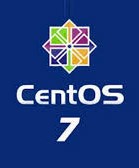Just some helpful links for a new CentOS 7 installation
passwd root / generate great random password
CentOS 7 Firewalld "d for daemon": get-started basics
Install wget if you just did a CentOS 7 minimal install: yum Install wget
You will need at least one user who will be a member of the vboxusers group which is created when VirtualBox is installed: adduser username
Install VirtualBox 4.3 on CentOS 7 (Note that some "ungraceful" exits from ldconfig while rebuilding vboxdrv are normal on a system that does not have a previous version of virtualbox to uninstall.)
Headless
No-GUI: Instructions to run VirtualBox headless - start at section 3
If you are going to run virtual box "headless", you will want to install the extension pack from the non-gui CentOS command prompt. Find the latest extension pack here on oracle.com and then use wget to download it. Once you have the file, install it, making sure to use the latest file name.
wget http://download.virtualbox.org/virtualbox/4.3.26/Oracle_VM_VirtualBox_Extension_Pack-4.3.26-98988.vbox-extpack
# VBoxManage extpack install Oracle_VM_VirtualBox_Extension_Pack-4.3.26-98988.vbox-extpack
Enable remote desktop
#VBoxManage modifyvm Rhiannon --vrde onStart it, headless
# vboxmanage startvm <vmname> --type headlessVirtualBox with graphical user interface thanks to GNOME
Once you have GNOME running, look for a menu choice to start VirtualBox. Details vary slightly from one version of CentOS to the next.
Other - Subversion
For a command-line subversion client, consider svn 1.8 instructions but be careful to adjust the repo address for CentOS7. Chnaging to /centos/7/ in the baseurl works for the content of /etc/yum.repos.d/wandisco-svn.repo
[WandiscoSVN]
name=Wandisco SVN Repo
baseurl=http://opensource.wandisco.com/centos/7/svn-1.8/RPMS/$basearch/
enabled=1
gpgcheck=0
Other - Win2012 ISO
If installing Windows server guests, FREE ISO for Windows Server 2012 Essentials
Other - VNC
If installing VNC for remote gui access: vnc-server-installation-on-centos-7 and remember to use -nolisten tcp -localhost for security in your /etc/systemd/system/vncserver@:1.service file. Remember that the :1 refers to the port when added to 5900 thus :1 means you connect on port 5901. You do not have to use 5901; you can use another port number.
